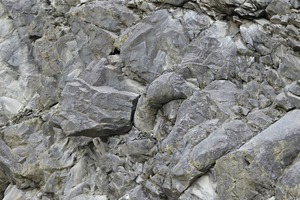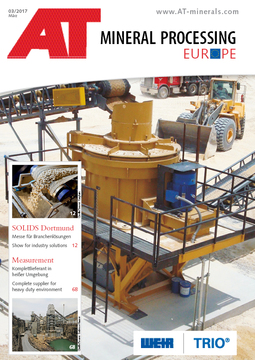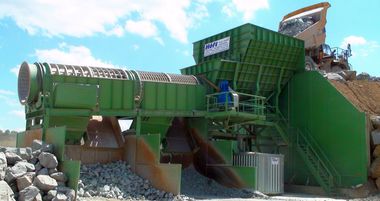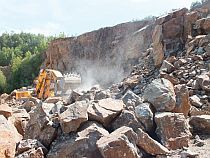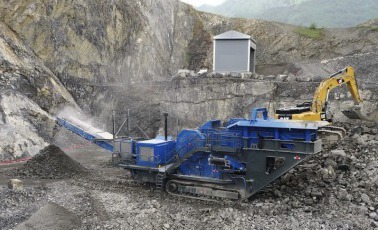From ballast to primary rock flour
Diabase has been selected as Rock of the Year for 2017. What sets this rock apart is its versatility. It is just as much in demand for sculpting and ashlar production as for producing high-grade ballast and chippings as well as aggregate for producing building materials. Ground diabase contributes as primary rock flour to soil improvement.
Diabase extraction in Germany
Only very few quarries in Germany are now extracting diabase of exceptionally high quality for ashlar production. It is more common for the rock from Germany’s useful reserves to be processed to ballast and chippings. Its high compressive strength and frost resistance predestines diabase for high-grade applications in traffic route construction. It is, for example, a preferred rock for the production of railway ballast. The high polishing resistance of diabase chippings used in road wearing courses ensures good tyre grip, making road traffic safer. Diabase grades are also popular because of their good adhesive properties with bitumen binder as aggregate in the production of asphalt. Used as high-grade chippings in special asphalt mixes, known as whispering asphalt, they help reduce traffic noise. The production of armourstone or gabion fillings are other applications. Ground to “primary rock flour”, diabase with its high calcium and magnesium content improves soils for greater success in horticulture and agriculture.
That fact that diabase rocks can be worked easily and demonstrate “edge sharpness” in use was something that Stone Age peoples already knew, using them to make tools such as axes, scrapers and knives. As well as for its good workability, the rock is traditionally valued for its unobtrusive yet premium-quality appearance in ashlar production proving popular for the making grave stones, columns, facade tiles or flooring.
Formation and reserves
Diabase rocks are commonly regarded as something like the “older brothers” of the basalt rocks. That means that they owe their properties to a weakly metamorphic transformation of basalts that have flowed out under the sea. Crystalline, mainly small-grained diabase rocks are generally found as bedded intrusive rocks in sedimentary gangue rock, mainly clay shale. The greenish colouring of the originally black basalt parent rock typical for diabase is formed by the formation of chlorite and epidote during the rock’s metamorphosis in the marine environment. Thanks to its mineral content and its compact microstructure, diabase exhibits high density.
In Central Europe, diabase occurs mainly in strata of the Devonian and Lower Carboniferous. For this reason, they are found in the German uplands, for instance in the Rhenish Slate Mountains, in the Harz region and in the Thuringia-Vogtland-Frankish Slate Mountains. Distribution regions of diabase in alternating strata with different sediments like lime or clay slate are mainly characterized by dome-shaped landscapes in which the diabase protrudes as hogback structures.
The presentation and ceremonial dedication of diabase of the Rock of the Year 2017 will take place on 28 April 2017 at Hartsteinwerk Schicker OHG in Bad Berneck (Upper Franconia). Another event dedicated to the Rock of the Year will be held at the Day of the Geotope in September in Eastern Thuringia.
The “Rock of the Year” is chosen every year by a committee of experts from science, industry and administration under the direction of the Berufsverbandes Deutscher Geowissenschaftler (BDG, geoberuf.de, Professional Association of German Geoscientists). The Bundesverband Mineralische Rohstoffe (MIRO – Germany’s Federal Association of Mineral Resources) is member of the Advisory Board and supporter of this campaign to make the origin, use and value of our domestic mineral resources clearer to a wide public. In chronological order, granite, basalt, limestone, tuff, kaolin, phonolite, gneiss as well as sand have been named “Rock of the Year” in previous years.

